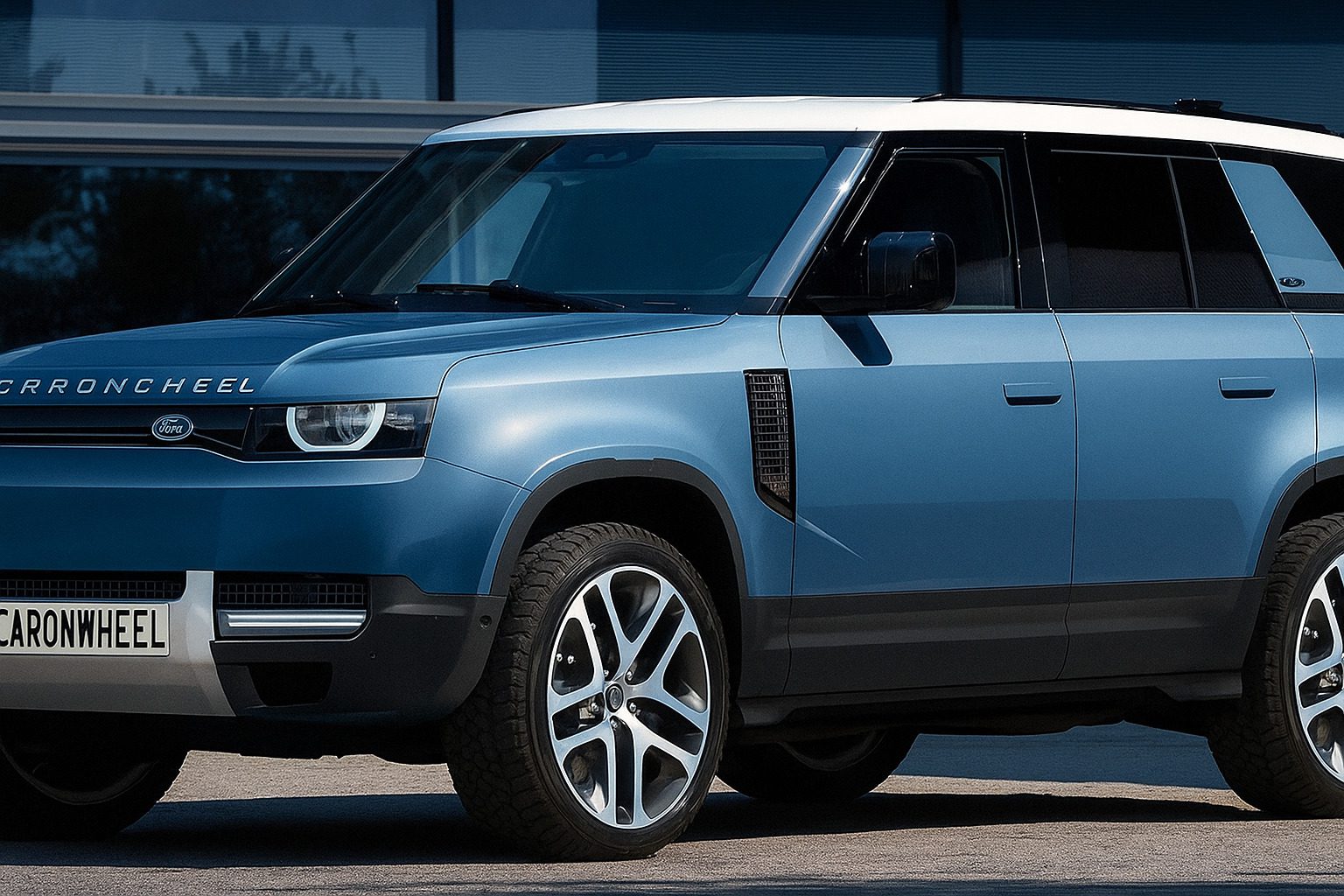Explore the upcoming Baby Land Rover Defender (Defender Sport) set to launch in 2027. Discover its design, features, engine options, EV platform, and why it could replace the Discovery Sport.
Table of Contents
Baby Land Rover Defender
Land Rover is preparing to expand its Defender family with an all-new compact SUV, often referred to as the “Baby Defender” or Defender Sport, expected to debut in 2027. Positioned as a more affordable and urban-friendly alternative to the full-sized Defender, this new model is set to play a crucial role in Jaguar Land Rover’s (JLR) electrification strategy.
With growing competition from Mercedes-Benz, BMW, and new EV entrants, Land Rover aims to attract a wider customer base by combining rugged design, everyday practicality, and modern hybrid-electric technology.
Baby Land Rover Defender: The Concept and Positioning
Successor to Freelander 2 and Discovery Sport
Industry insiders suggest that the Baby Defender could act as an indirect successor to the Freelander 2 and may also replace the Discovery Sport in Land Rover’s line-up. Both models previously targeted families and young professionals who wanted Land Rover’s DNA in a more compact and affordable package.
Defender DNA in a Compact Size
Unlike other road-focused Land Rover models, the Baby Defender is expected to retain the chunky proportions, boxy silhouette, and tough design cues of the larger Defender 90, 110, and 130 variants. However, it will sit lower and be less off-road focused, catering more to city drivers who still want a rugged SUV image.

Design and Dimensions
Exterior Styling
Spy shots of the prototype show that the Baby Defender carries straight-edged styling, squared wheel arches, and upright proportions, making it instantly recognizable as part of the Defender family. Expect a modern front fascia, slim LED headlamps, and a wide stance to give it presence despite its smaller footprint.
Size Comparison
The Baby Defender is likely to measure approximately 4.6 meters in length, 2 meters in width, and under 1.8 meters in height. This puts it in the same league as the Mercedes-Benz “Mini G-Class”, Skoda Kodiaq, and Dacia Bigster—key rivals in the premium compact SUV segment.
Platform and Technology
EMA Platform for Electrification
The Baby Defender will be based on JLR’s new EMA (Electrified Modular Architecture) platform, designed primarily for 800V electric drivetrains. This advanced setup supports faster charging, improved range, and modular flexibility for multiple models.
- Electric Version: Expected to lead the line-up, powered by in-house motors and Tata-supplied batteries.
- Plug-in Hybrid Version: JLR may also offer PHEV options due to strong demand for hybrids in Europe and Asia.
- ICE Variant (Possible): A limited range of internal combustion engines may be retained for global markets where EV adoption is slower.
Shared with Evoque and Velar
The Baby Defender will share its platform with the next-gen Range Rover Evoque and Velar, both of which will also debut in electric and hybrid forms. This ensures economies of scale, lower production costs, and wider availability of advanced tech across JLR’s portfolio.
Interior and Features
While details of the interior remain under wraps, expect:
- Minimalist, high-tech cabin inspired by the larger Defender.
- Large touchscreen infotainment with JLR’s latest Pivi Pro system.
- Digital driver display with customizable off-road and on-road modes.
- Premium materials with sustainable options (eco-friendly leather substitutes).
- Ample storage space and flexible seating, targeting young families and urban buyers.
Safety tech will likely include ADAS features such as lane-keeping assist, adaptive cruise control, 360° camera system, and autonomous emergency braking.
Market Positioning and Pricing
The Baby Defender will be priced significantly lower than the Defender 90, making it a more accessible entry point into the Land Rover brand. With global EV demand rising, this compact SUV could quickly become a volume seller.
Expected rivals include:
- Mercedes-Benz Mini G-Class (expected 2026)
- BMW iX1
- Audi Q4 e-tron
- Skoda Kodiaq (next-gen hybrid/EV)
Production Plans
The Baby Defender will be manufactured at JLR’s Halewood plant in the UK, which is undergoing a £500 million upgrade to accommodate electric vehicle production. Motors will be built in-house, while Tata’s new Somerset gigafactory will supply batteries
You can also read: Yamaha Mio 125 Scooter: 66kmpl Mileage, 78km/h Speed & Premium Style Under Budget
Why the Baby Defender Matters
The Defender nameplate has been a global success, selling over 114,000 units in 2024. By expanding the Defender range with a smaller, more affordable model, JLR aims to:
- Attract younger buyers who find the full-sized Defender too expensive.
- Compete with luxury compact SUVs from German brands.
- Strengthen its EV portfolio in line with global sustainability goals.
- Revive the spirit of the Freelander, which had a loyal following.
Final Thoughts
The Baby Land Rover Defender (Defender Sport) represents a bold step for JLR. With its rugged Defender-inspired design, advanced EMA platform, and flexible powertrain options, it promises to be more than just an entry-level SUV.
For buyers, it will offer Land Rover’s heritage of toughness, modern luxury features, and the option of electrified drivetrains—all in a compact, city-friendly package.
Expected to launch in 2027, this SUV could redefine the compact premium SUV market, giving Land Rover the edge in an increasingly competitive global EV landscape.
In summary: The Baby Defender is not just a smaller SUV; it’s a strategic move by Land Rover to future-proof the Defender legacy.
